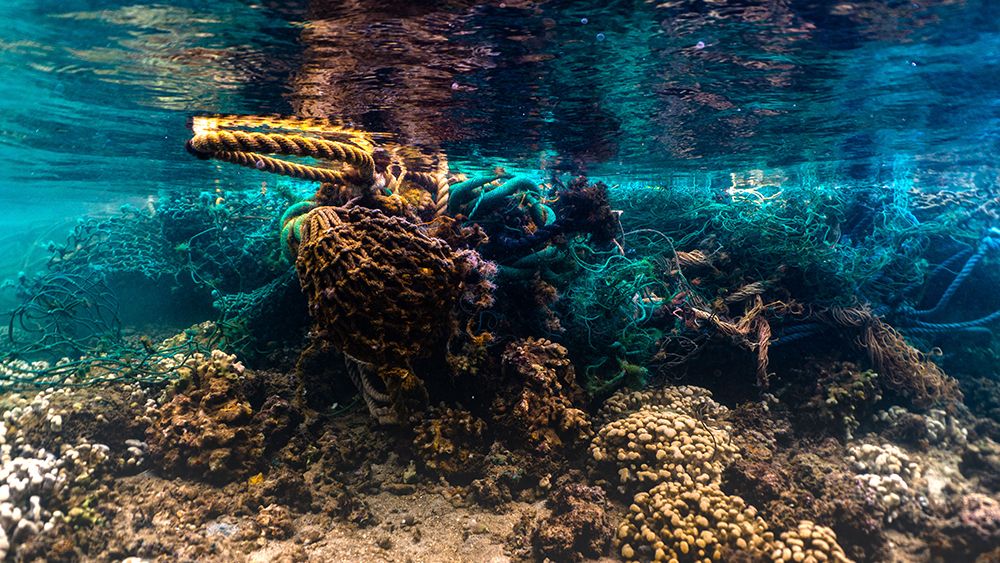HONOLULU — Hawaii Pacific University’s Center for Marine Debris Research has launched a project to remove derelict fishing gear from the ocean. The goal is to remove 220,462 pounds of derelict fishing gear from the ocean over a two-year period.
The HPU project is a partnership with the Hawaii Longline Association and the Department of Land and Natural Resources’ Division of Aquatic Resources with partial funding by the National Oceanic and Atmospheric Administration’s Marine Debris Program Removal Grant.
Lost and abandoned fishing gear, including ghost nets, make up derelict fishing gear that eventually reach Hawaii’s beaches. But before doing so, ocean currents tangle up the gear into large masses that entangle and drown marine animals, and smother and kill Hawaii’s reefs as they make their way to the shoreline. DFG is one of the most harmful types of marine debris to marine animals and ecosystems.
“When I first saw the damage caused by these large ghost nets on corals in Kaneohe Bay I was motivated to prevent it from happening,” said Research Manager of HPU’s Center for Marine Debris Research Raquel Corniuk in a news release. “This project is poised to be a win-win for fishermen and our beautiful ocean environments.”
Commercial fishers registered in the project will be paid a bounty of $1 to $3 per dry pound for DFG found at sea and returned to Oahu. HPU ran a trial bounty project from 2020 to 2021 with the Hawaii Longline Association.
“For decades, Hawaii longline vessels have been bringing back derelict nets/ropes encountered at sea, and since 2010, disposing the debris at the dedicated bin at Pier 38,” said Eric Kingma, executive director of Hawaii Longline Association. “Derelict ghost gear is a serious safety at sea hazard and when entangled with fishing gear, lost time and economic impacts result. HLA is excited to partner with HPU in this project and contribute to its objective.”
Debris will be collected from fishers at the dock, then documented, measured and weighed in the net shed by HPU staff, students and volunteers. Artists, educators and recycling researchers will have the first opportunity to repurpose the debris. The City and County of Honolulu’s Nets-to-Energy Program will convert the leftovers to electricity assisted by Schnitzer Steel Hawaii Corporation and H-Power (Covanta).
Initial reports from a current HPU study indicate that most of the DFG washing onto Hawaii’s beaches is not from Hawaii-based fisheries. The finding will be included in discussions to prevent lost gear in the first place.
Additional information is available on the DAR website. Commercial fishers with appropriate vessels and experience lifting or towing debris at sea should register by the Feb. 28 deadline on HPU’s project website. Individuals interested in volunteering can fill out an online volunteer form via the Center for Marine Debris Research.
Sarah Yamanaka covers events, environmental and community news for Spectrum News Hawaii. She can be reached at sarah.yamanaka@charter.com.
